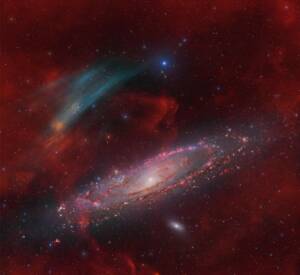
Discovery of the M31 [OIII] emission arc
Recently, a major discovery by an international team of amateur astronomers and scientists has become a huge online hit, and this new discovery is just located in one of the
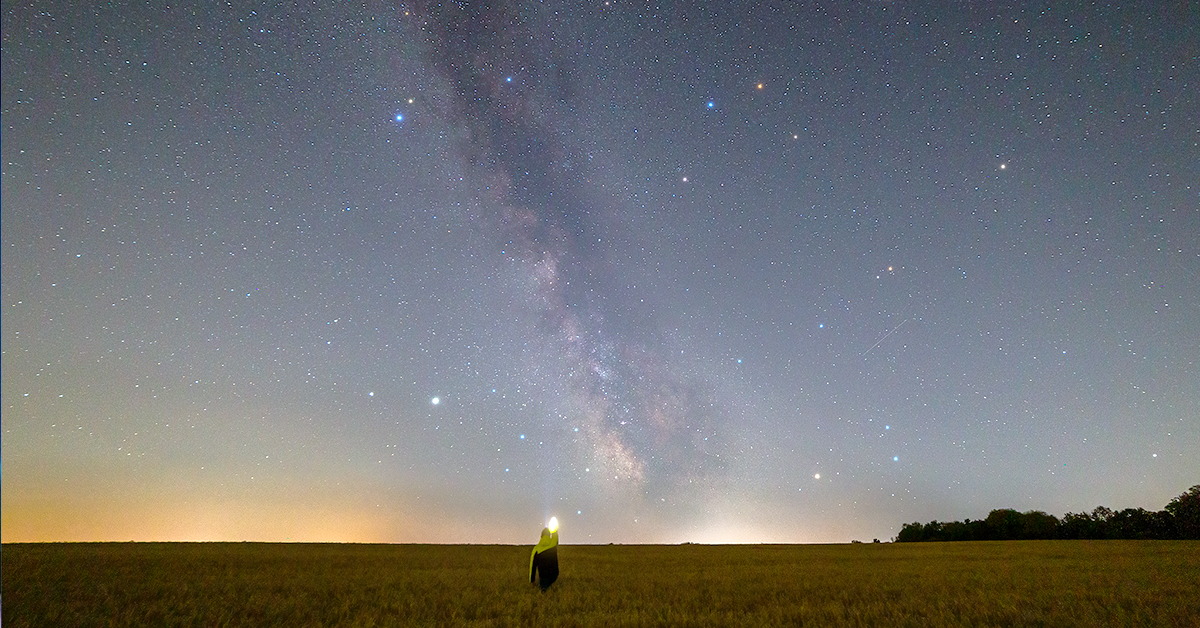
Hello! First, I would like to thank you for choosing my photo as an ASIWEEK winner and thank you for inviting me for this interview. My name is Emil Andronic, I am originally from Romania, now living in Hertfordshire, UK with my wife Claudia and our 2 beautiful daughters, Nina and Olivia. Apart from everything related to space, I love nature, I love animals and I like to listen to Celtic and medieval music. I like everything else that is beautiful.
In the beginning, it never crossed my mind to go into astrophotography because I bought my first telescope for visual purposes only. As I was very inexperienced and knew next to nothing about telescopes, in 2016 I bought my first one, a Skywatcher 200p on a manual EQ5 mount, a setup that wasn’t very appropriate for a novice, but my desire was much stronger than all the difficulties that I was having. After some proper documentation, lots of questions asked on the astro forums and lots of YouTube tutorials. I managed to make good use of the equipment. After a while, I realized that light pollution is a very important factor in what I could actually see through the telescope, so I decided to try to take some photos of the moon with my phone through an eyepiece. This is when my astrophotography journey started with the first photo taken at the end of 2016. I was absolutely hooked and from that time everything changed, the passion and desire became stronger and stronger. My first proper astrophotography setup was the original Skywatcher 200p (which luckily turned out to be a very good astrophotography telescope too) and an astromodified Canon 700d on an EQ6 mount.
I had a lot of fun and a lot of headaches with that setup, and only after 6 months, I managed to take some photos that even today I am proud of.
Over the years I owned various astrophotography gears and at the moment I own 2 Deep Space astrophotography setups and some gear for widefield nightscape work.
Out of the two, my most important setup is an Astro-Tech 106 LE 690mm f6.5 triplet refractor with a Moonlite focuser upgrade, TS Flat2 field flattener, ASI294MM Pro CMOS camera, ZWO 8×1.25” electronic filter wheel with a Chroma 1.25” filter set on a Skywatcher EQ6-R Pro mount, setup that I used to take the winning photo of the Seagull nebula.
My second setup is for widefield DSO and consists of a TS65 420mm f6.5 quadruplet refractor on an AZ-EQ6 GT mount.
For my nightscape work, I’m using a portable star tracker with an astromodified Canon 6d and a few lenses.
Indeed, in time my love for capturing the night sky extended from DSO imaging to nightscapes too. I absolutely love both kinds of imaging, but being outside, under the dark sky filled with millions of stars gives me a true sentiment of being one with the universe.
Most of my DSO imaging is done from the comfort of my home and the excitement of seeing the images of those faint targets rolling in is something that can’t be compared.
The Seagull Nebula is a very difficult target for me and for most of the people living in the UK. It is a low-altitude target, from where I live crossing the meridian at only 27 degrees. Also, the fact that it was shot from the London suburbs with the heavily light-polluted metropolis right to the south of my location made it even more challenging. My sky visibility towards the South was not great and I could only shoot a couple of hours each night, but with a lot of patience, I managed to gather a total of 16 hours and 30 minutes to create a color image of this beautiful target.
Most of the times I do my calibration and stacking in AstroPixel Processor, which gives me a very good starting point. The exact same thing was done for my Seagull nebula photo. I don’t use APP for much more, so I move the stacked photos into pixinsight, where, in linear state, I crop the stacks, apply a few iterations of DBE, do my noise reduction and sometimes deconvolution. When I am pleased with the result, I use the star removal technique for each of the narrowband photos and proceed to combine them into a SHO image. Because the Hydrogen alpha signal is much stronger than all the other channels, the combined photo comes out predominantly green. With the help of SNCR Green, I try to make it a bit more pleasing to my eyes. This is mostly everything I do in linear state. I then proceed to the initial stretch masking the brighter areas in the photo. My knowledge in pixinsight is not very vast, the reason why, most of the times, after the initial stretch I move the photo into photoshop. Here, using a lot of layer masking, I stretch the photo even more, apply high pass filters for selective sharpness, and if needed, I use Topaz Denoise or Noise Ninja to keep the noise at bay. For the colours, I like to play and experiment with the Hue/Saturation and Selective colour until I get a satisfactory result. In the end, I add the RGB stars to the photo and save it as final.
When I first started my astrophotography journey, I didn’t know the dedicated astro cameras were quite affordable and only after one and a half years of using a modified DSLR I moved to a dedicated CCD camera. The camera was not very sensitive and results were good but not great. After joining a few astro groups on Facebook, I found out about ZWO, and the incredible results that people were getting with the ZWO CMOS cameras made me want one for myself. In 2019 I had the opportunity to purchase my first ZWO camera, an ASI294MC Pro. I was extremely excited that I finally had the camera I was dreaming of. That’s when my astrophotography journey started to get better and better. I was incredibly happy with the results and only at that point my images were starting to be published in well-known astronomy magazines.
Along with the ASI294MC Pro, I had a different brand mono camera too, but being so impressed by the results and sensitivity of the ASI294MC Pro, I sold that mono camera only to replace it with the mono version of the ASI294MC Pro. I was also on the lookout for a good set of filters to pair them up with the ASI294MM Pro, so I bought a set of Chroma filters.
The first light was absolutely incredible, I imaged the Rosette nebula and the result is one of my best photos to date. The photo brought me a lot of joy, not long after posting it to Astrobin, it was chosen as a Top Pic. It was also published in the Astronomy Now Magazine and BBC Sky at Night Magazine and it was chosen as APOD by the Gruppo astrofili Galileo Galilei in Italy and as the cover photo for the August month in their 2022 calendar.
Because of the great results I was getting with the ASI294MM Pro camera and the narrowband filters, I started to adventure into imaging targets that I thought would be impossible from my bortle 7 location in Bushey.
One of those targets is Barnard 150 – The Seahorse nebula
I have always been reluctant to do LRGB imaging from home, but the great desire of capturing this target and the lack of chances to take my scope to dark skies to image it made me have a go at it from my back garden. And I’m very happy I did because the ASI294MM Pro camera showed me yet again that it’s capable of greater things that I ever hoped for.
Most of my images are shot from my back garden, but whenever I have the opportunity, I do like travelling to dark places. I used to travel a lot with my telescopes.
But lately I find it much easier to travel light with only a backpack and some widefield gear.
Ah, yes, a story. 😁
Last year, 2 of my friends and I planned a trip to Winspit quarry for some nightscape shots and when we got there, the place was full of people listening to loud music, filming and dancing with fire. I have never seen anything like it. They were very friendly and they even let us take some photos.
I don’t know who they were and what exactly they were doing there but it was a very nice experience. In the end, we moved to a different location nearby and achieved our goals of shooting the Milky Way.
The ever increasing light pollution and technology like the Starlink megaconstellation are indeed things that we should worry about, and we must do our best to reduce their impact by contacting our representatives, making our point of view known on the social media platforms and over the World Wide Web. As we know technology has evolved quite a lot and with the use of narrowband filters, it is now possible to image the night sky from heavily light polluted locations but that is not really a solution to the problem. It is not only us that are being affected, species of insects, birds are driven to extinction and there’s no return if they are indeed extinct, science is being greatly affected by the growing number of satellites that orbit the Earth. The good thing is that light pollution can be reversed and we must make everyone around us aware of its detrimental effects and hopefully there will soon be regulations put in place so that both science and “megaconstellations” can coexist.
When I started to take photos of the night sky I wasn’t on any of the social media platforms, and Google was my best friend for answers. A lot of them came from a well-known forum called Stargazers Lounge where I ended up registering so I could ask my questions. The friendly members helped me very much, but one particular member gave me answers that I could truly follow and understand. His name is Olly Penrice, and because of his answers, I started following him on the forum to get notifications for all the tips and tricks that he was giving to other beginners like me. Only after a while I found out about the YouTube tutorials and about the Facebook astronomy groups. In the recent years I have made a lot of friends in these groups and I started following a lot of pages where I found valuable information on how to improve my skills. Casey Good, one of my favorite astrophotographers, also inspired me to become better at what I am doing, Trevor Jones from Astrobackyard.com has some good tutorials that I used with great success, Peter Jenkins is always an inspiration. I don’t follow a set workflow in my processing and I don’t know if this is a good or a bad thing, but I’m trying my best to get a final result that I am pleased with and only after that I post it to my website emilandronic.co.uk and on the social media platforms.
Astrophotography is now a part of my life and there isn’t a day gone without thinking of it or without planning something, if it’s a future target or some changes to my gear. We recently bought a house, and when we were at the stage of finding one, the back garden of the house had an impact on the final decision. Astrophotography takes my mind of other things, which is not always good because of the family commitments, but most of the time it provides relief from the stress accumulated during the day. Astrophotography keeps me busy and keeps my mind working, which I consider to be a good thing.
My wife says yes, but I disagree with her. 😁
I do indeed dedicate quite a lot of my spare time to astrophotography, but if there is something more important that needs doing, I can leave it aside for some time. Now, for example, I am on a break because the garden of our new home is not safe enough to keep the gear outside. That will soon change and when it is ready, I’ll get back into imaging. I’m really looking forward to it.
I can easily balance the hobby with my work, with all the software and technology available I don’t have to stay awake to capture my photos, I can easily set my session from start to finish and let the telescopes do the work throughout the night. Even though I would love to be awake, during the weekdays when I have to wake up early in the morning, I can’t afford to have sleepless nights. It’s different during the weekend, but if I have the opportunity to go to a dark location, I prefer to do that, but with my widefield gear for nightscapes work. With the help of a remote control app on my phone, I take an occasional sneak peek at what the telescopes are doing at home. In the near future, I’m planning to build a fully automated observatory in my garden which will help me even more in balancing my work with the astrophotography.
2021 has been a year that will be very hard to beat. I had an incredible year and I am thankful for all the achievements that came with it.
Last year I posted 40 photos on Astrobin and 13 of them have been chosen as Top Pics.
The Gruppo Astrofili Galileo Galilei team chose 5 of my photos as their ApodGrAG and they gave me the honour of having the Rosette nebula photo in the 2022 calendar.
The AAPOD2 team chose 4 of my photos as the Amateur Astronomy photo of the day.
Throughout the year I received 4 APODs from Astronomia.com;
Last but not least, it’s all the photos published in the well-known astronomy magazines, 5 photos published in the Astronomy Now Magazine with 2 of them as the photo of the month, 3 photos in the BBC Sky at Night Magazine with one photo as the picture of the month, 2 photos in the Sky & Telescope Magazine and one in the Astronomy Magazine.
This year, because we finally have our own house and won’t rent anymore, I’m hoping to finally have my own observatory. From there on, everything will be much easier.
Keep up the good work because, from all the cameras that I have used throughout the years, your cameras are the best.
Thank you again for giving me the opportunity to present myself, my gear and my work.

Recently, a major discovery by an international team of amateur astronomers and scientists has become a huge online hit, and this new discovery is just located in one of the
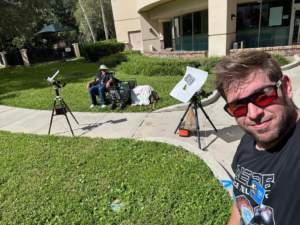
That 11-year-old boy staring at Horsehead Nebula photo would never have imagined… Decades later, he’d be capturing amazing deep-sky images from his Florida backyard! “ It was amazing to see

Hello,Sara Harvey,thanks for accepting our interview invitation. Congratulations on winning the ASIWEEK competition in week! Q1: At first, congratulation that your nice image won #ASIWEEK. Can you introduce yourself to
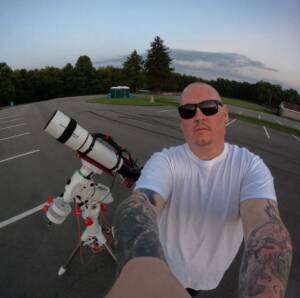
Astrophotography is more than just capturing images of the night sky—it’s a journey of discovery, patience, and creativity. For this passionate astrophotographer, what started as a chance encounter with a
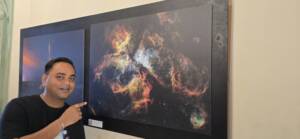
Taranjot Singh, an Indian origin Australian astrophotographer who is making waves on the international stage. Taranjot has been recognized as one of the Top 5 finalists in the prestigious Siena
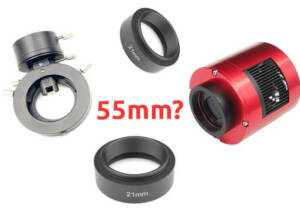
The back focal length is advised by telescope manufacturers. Since most telescopes have a 55mm back focal length, we are here to provide detailed instructions for all ASI cooled cameras.Please